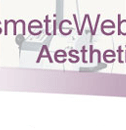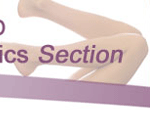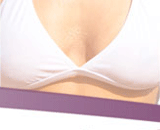|
 |
Veeway is the exclusive
distributor of
Rejuvi products.
Tel: 011 786 1020
Cell: 083 251 1584
Email: veeway@icon.co.za |
|
A NEW DIMENSION FOR REVERSING TATTOOS
(information provided by Richard Heyman)
Suitable for use by professionally trained tattoo and permanent make-up artists using the correct equipment - not for individual home use.
There has been a rising popularity for permanent makeup and tattoos in many countries in recent decades.
The many reasons for having body tattoos include philosophy, anxiety, decoration (rose), fashion (Olympic Games) love (girlfriend & boy friend names) etc. Tattooing techniques applied onto facial area is called permanent makeup or micropigmentation. It provides not only the convenience of not having to continually apply make-up but also offers correction or beautification of imperfect eyebrows, eyeliner or lip liners.
What makes a tattoo?
Tattoo or permanent makeup pigments are mostly inert inorganic materials such as iron oxides, chromium oxide, titanium dioxide, carbon black etc. These inorganic materials are insoluble in water and most organic solvents. After embedment into the skin, these pigments are not affected by detergents, solvents and abrasion due as no direct contact is made. Moreover, these pigments will not be diminished by skin metabolism or biochemical process. This is why these pigments could stay in the skin for a long period of time or permanently.
Unfortunately there is often a change of attitudes in philosophy, fashion, love and careers, creating a demand for the removal the tattoo and in the case of permanent makeup, which is more sensitive or delicate being on the facial area, any undesirable shape or color change (occurs gradually from exposure to sunlight) needs correction or removal.
Some removal methods:
In the past tattoos were erased by dermabrasion (spinning wire brush) or surgical excision, which resulted in serious scarring. More recently various laser techniques are popularly being used for erasing tattoos. Lasers are used to break up a traditional pigment particle (10 -5 micrometer) to very small particles (considerably smaller than 0.1 micrometer), which become less visible and may be removed by lymphatic vessels.
There are several major disadvantages in the laser removal process.
-
Laser is color selective and can not remove green or blue color due to the current technical limit.
-
Lasers typically takes 10 to 20 times to break a tattoo pigment particle down to 0.05 micrometer so that the overall removal cost becomes very expensive.
-
Scarring or hypopigmentation (skin loss own pigments) may occur during many treatments.
-
Laser equipment needs large investment and usually is performed by medical professionals.
-
Laser removal on the facial area is a very painful process.
Rejuvi's removal method:
Rejuvi Laboratory in America has now developed an effective, safer extraction technique for removal of tattoo or permanent makeup.
The Rejuvi Tattoo Removal Technique utilises several inorganic oxides with good chemical affinity (attraction) with tattoo pigments in a special formulation. When tattoo pigments are in physical contact with the Rejuvi Tattoo Removal formula, the pigments will merge into the Removal Formula. Then skin will reject Rejuvi Tattoo Removal Formula (push to the skin surface).
(Please note: the
Rejuvi Tattoo Removal technique can not be used to remove tattooed eyeliner because it will cause damage if it gets into the eyes.)
The development of this technique was initiated by the renowned biochemist Dr. Wade Cheng of Rejuvi Laboratory in the early 1990's and the product was launched into the U.S. market in the mid 1990's. The Rejuvi Tattoo Removal technique has been significantly improved in both formulation and application details over a decade. Numerous publications can be found in aesthetic and medical journals. The large and influential U.S. Society of Permanent Cosmetic Professional (SPCP) has endorsed the Rejuvi Tattoo Removal technique.
This technique made front page news in Mexican, Japanese and Bulgarian newspapers, with online news websites such as Sky News and Mail Online in England which publicised the Rejuvi Tattoo Removal Technique in late 2008. This spread to other websites with the information being translated into into German, Portuguese, Spanish and Russian.
To date the Rejuvi Tattoo Removal technique has been widely and successfully used by permanent makeup artists, tattooists and medical professionals in America and many overseas countries.
The Rejuvi Tattoo Removal technique provides an effective, simple and economical new dimension for erasing tattoos and permanent makeup, bringing releff to numerous people seeking assistance. | 







